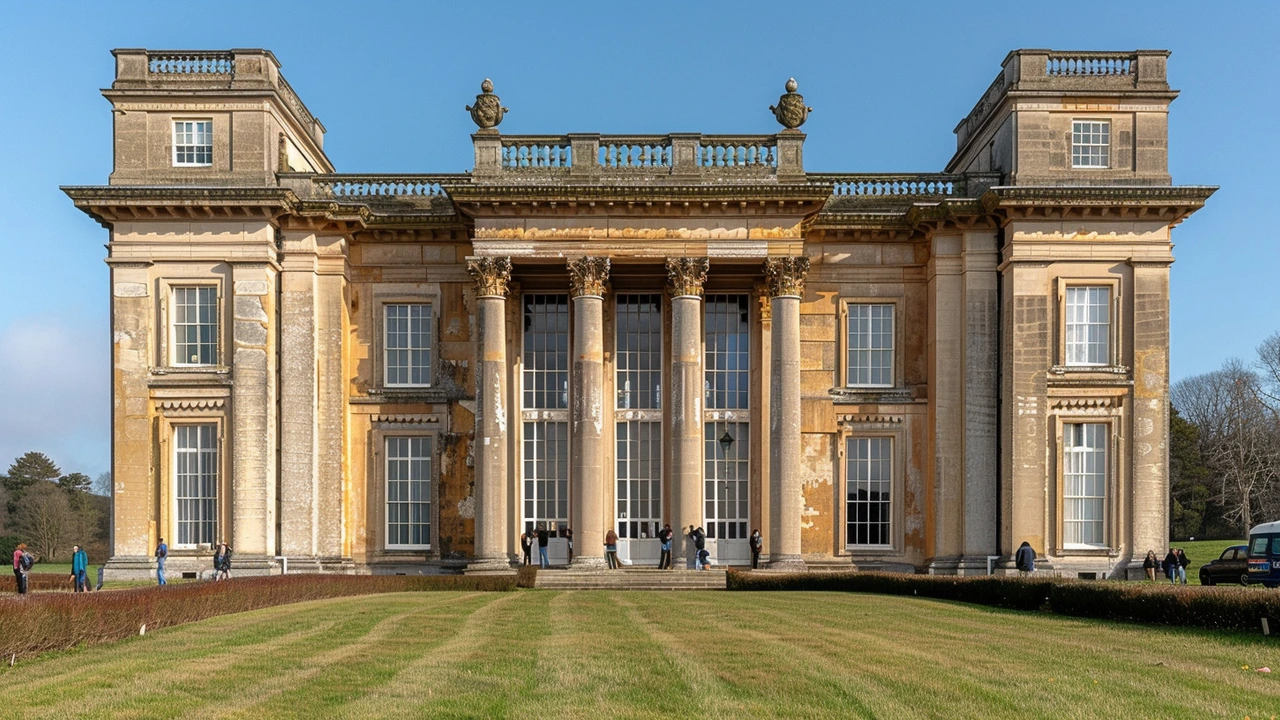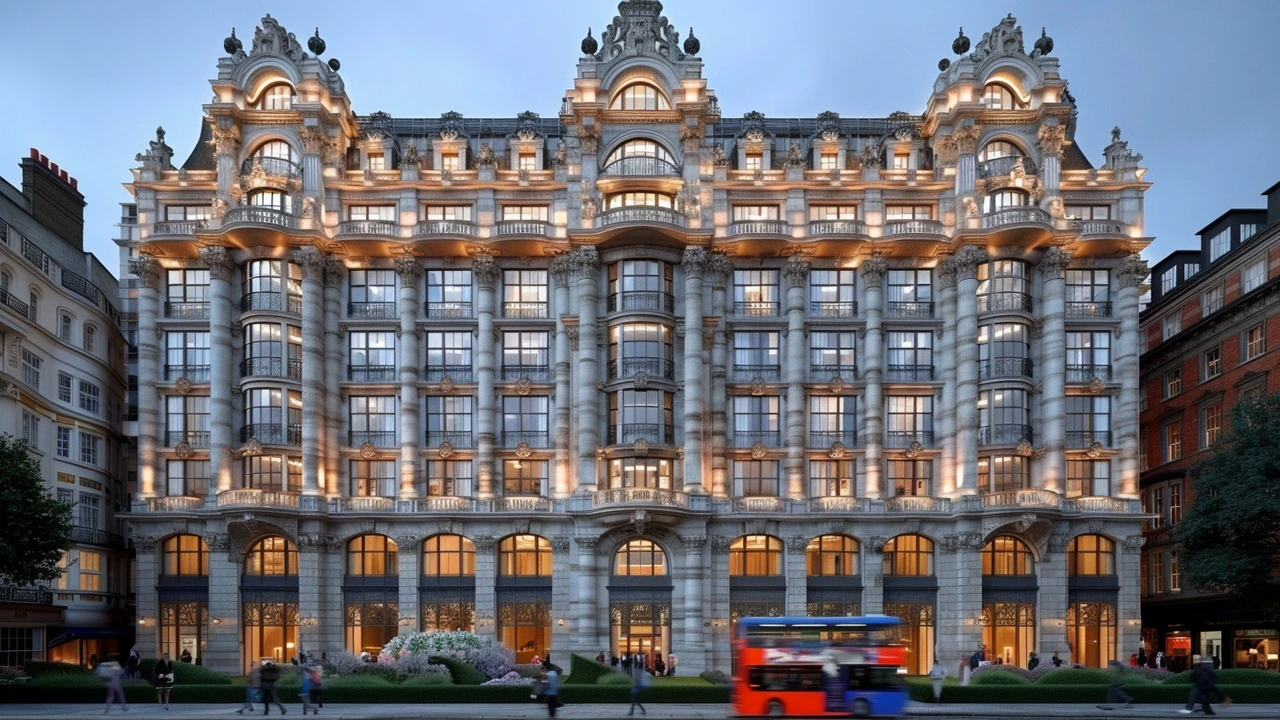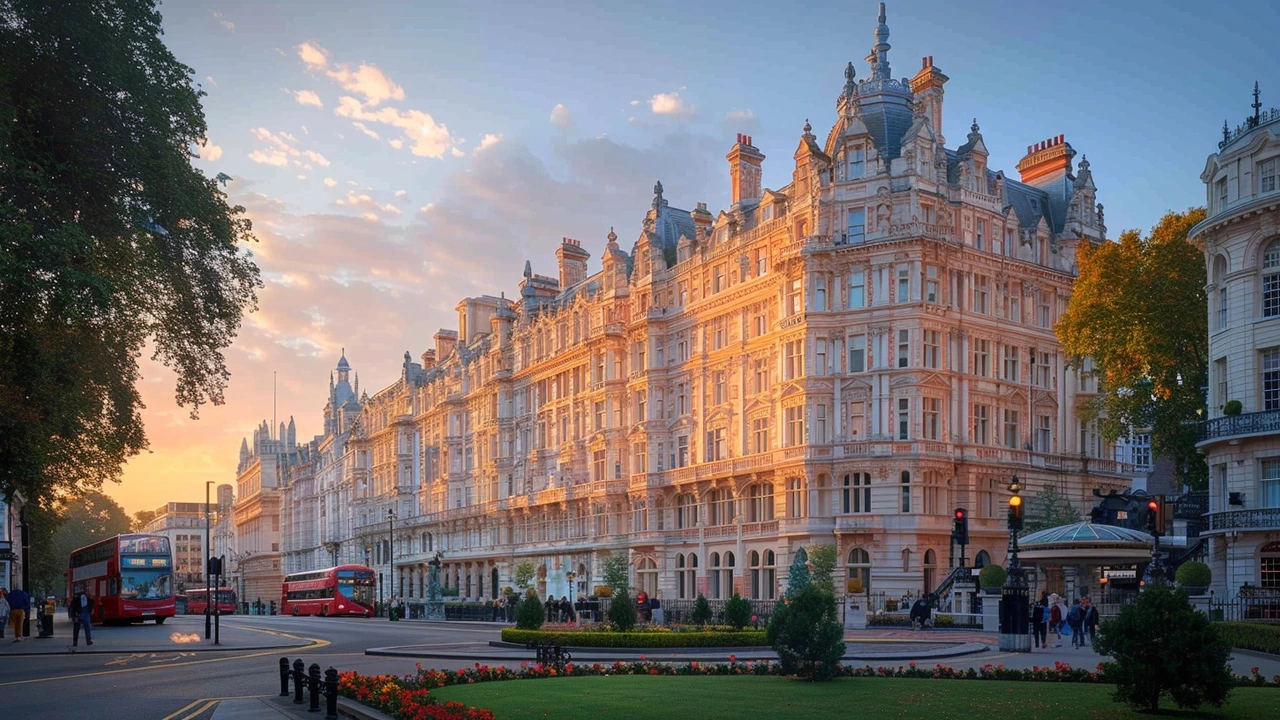The Enchanting World of Renaissance Revival Architecture
 Jul, 2 2024
Jul, 2 2024
Renaissance Revival architecture, a style that emerged in the 19th century, represents a renewed interest in the art and architectural principles of the Renaissance period. Known for its classical beauty and intricate detailing, this style brings the grandeur of the old world into the modern age.
With a focus on symmetry, proportion, and harmony, Renaissance Revival buildings often feature columns, arches, and domes reminiscent of classical Roman and Greek architecture. These elements are combined with modern construction techniques to create structures that are both beautiful and functional.
This article delves into the origins and historical context of Renaissance Revival architecture, its defining features, iconic structures, and its lasting influence on contemporary design. We'll also provide some tips on how to recognize this distinguished style in buildings around you. Join us as we explore the fascinating blend of old and new in Renaissance Revival architecture.
- Origins and Historical Context
- Key Characteristics and Elements
- Notable Renaissance Revival Structures
- Influence on Modern Architecture
- Tips for Identifying Renaissance Revival Architecture
Origins and Historical Context
Renaissance Revival architecture, often seen as a reflection of the grandeur and sophistication of the Renaissance era, began making waves in the early 19th century. It emerged as part of a broader cultural movement known as historicism, where architects and designers looked to the past for inspiration. The Industrial Revolution had sparked a sense of longing for the aesthetic and philosophical ideals of previous centuries, and this architectural style was one way to bridge the old and the new. Unlike previous styles, Renaissance Revival didn’t simply mimic the past but sought to interpret and modernize it.
The origins of this style can be traced back to England and France, where architects began to revisit the works of early Renaissance masters like Brunelleschi and Alberti. In England, the exhibition of Italian Renaissance architectural drawings in 1836 spurred interest among local architects. The growing appreciation for classical symmetry, proportion, and decorative elements led to the incorporation of these features in new buildings. In France, the École des Beaux-Arts played a pivotal role in training many architects in the principles of Renaissance design. These architects subsequently spread their knowledge and ideas across Europe and the Americas.
A notable aspect of Renaissance Revival architecture is its emphasis on classical elements. Architects of this period often used columns, pilasters, and rounded arches to create a sense of order and beauty, which were hallmarks of the Renaissance period. The style emphasized harmony and balance, using mathematical ratios that were thought to produce aesthetically pleasing results. Buildings from this period often feature symmetrical façades, elaborate cornices, and decorative brackets, all of which are reminiscent of structures from 15th and 16th-century Italy.
One of the key moments for Renaissance Revival architecture was the reconstruction of the Neues Museum in Berlin, completed in 1859. The architect, Friedrich August Stüler, blended Renaissance elements with modern engineering techniques, creating a building that was both robust and visually appealing. Another iconic example is the Boston Public Library, designed by Charles Follen McKim, which opened its doors in 1895. McKim’s design heavily relied on Renaissance principles, featuring a grand, symmetrical façade and an interior that emphasized spaciousness and light.
"Architecture is the learned game, correct and magnificent, of forms assembled in the light." — Le Corbusier
The impact of Renaissance Revival architecture extended far beyond Europe and the United States. In parts of Latin America, colonial cities saw the construction of government buildings and cathedrals boasting Renaissance features. Argentina’s Teatro Colón, inaugurated in 1908, stands as a testament to the global appeal of this style. This magnificent opera house showcases a blend of Renaissance and other historic styles, reflecting the era’s eclectic tastes.
This architectural style didn’t just focus on grand public buildings; it also made its way into residential architecture. Wealthy individuals across Europe and America commissioned homes that featured Renaissance elements. These buildings often included elaborate stonework, decorative columns, and expansive windows. They exuded a sense of elegance and sophistication, setting them apart from more modest dwellings of the time.
Key Characteristics and Elements
Renaissance Revival architecture, also known as Neo-Renaissance, is celebrated for its distinct and elegant features, often drawing inspiration from the early European Renaissance period. One of the most recognizable elements of this style is the symmetrical facade. Buildings following this design principle are harmonious, with balanced elements on either side of a central axis, giving them a timeless and orderly appearance.
The use of columns is another iconic feature. These columns are frequently modeled after classical orders, such as Doric, Ionic, and Corinthian. The columns may be purely decorative or support structures, but they always add a sense of grandeur and strength to the building. Alongside these, you often find arches and arcades, which are integral to the style and echo the designs of ancient Roman aqueducts and buildings.
Rooflines in Renaissance Revival buildings are often adorned with cornices and parapets, lending a finished and dramatic edge to the structures. These horizontal projections can be intricately carved or simple, depending on the building’s overall aesthetic. A notable example is the use of low-pitched roofs or flat roofs with a visually prominent cornice line, separating the roof from the wall below.
"Renaissance Revival is essentially a multi-layered palette of classical motifs that when combined, create a grand and stately presence," notes architectural historian Amanda Goss.
Windows in this architectural style are frequently large and paired or grouped in sets, commonly featuring rectangular or round-arched shapes. They are usually adorned with pediments or classical moldings which further emphasize the architectural roots in antiquity. Stained glass windows can also be a feature, depicting historical or allegorical themes, adding color and storytelling to the building's facade.
Another standout feature is the use of various building materials, particularly stone and brick. Renaissance Revival structures often showcase finely cut stone, laid in horizontal bands or rusticated blocks for the lower stories. As you move upward, the texture becomes less pronounced, creating visual interest and highlighting the structure's height and stability.
Interior spaces in Renaissance Revival buildings are just as carefully designed as the exteriors. They often feature grand staircases, providing both a functional and aesthetic role. Ceilings can be painted or coffered, adorned with intricate moldings and ceiling roses. Floors may consist of marble or terracotta tiles laid in intricate patterns, which are both durable and beautiful.
Detailed Ornamentation and Cultural Symbolism
Ornamentation in Renaissance Revival architecture is detailed and abundant. It may include carvings of foliage, scrollwork, and even mythical creatures, celebrating the humanistic themes of the Renaissance period. These embellishments often draw from classical mythology and literature, reinforcing the connection to the arts and humanities.
The use of sculpture and stucco to decorate facades and interiors also stands out. Sculpted figures, often representing important cultural or historical figures of the Renaissance, adorn the building, providing a narrative and sense of place. Stucco work adds texture and relief, offering an additional layer of depth and complexity to the design.
In summary, Renaissance Revival architecture melds classical elements with contemporary innovations, creating structures that are both majestic and enduring. Its emphasis on symmetry, classical motifs, and rich ornamentation continues to inspire and captivate architects, builders, and design enthusiasts worldwide.

Notable Renaissance Revival Structures
One of the most enchanting aspects of Renaissance Revival architecture is its ability to bring the grandeur of the Renaissance period to new, modern settings. Some structures have become celebrated icons due to their intricate designs and historical significance. Let's delve into a few such notable buildings that exemplify this style.
Buckingham Palace, London
Buckingham Palace, the official residence of the British monarch, is a stunning example of Renaissance Revival architecture. Originally a large townhouse built for the Duke of Buckingham in 1703, it was acquired by King George III in 1761. The palace was extensively remodeled in the 19th century, adopting a neoclassical style embodying the Renaissance Revival. The façade designed by Sir Aston Webb in 1913 adds to its majestic presence. The palace's symmetrical form, balustraded balconies, and expansive windows reflect traditional Renaissance elements, making it a monumental symbol of elegance and history.
Library of Congress, Washington D.C.
The Library of Congress in Washington D.C. is another magnificent example. Completed in 1897, the Jefferson Building is renowned for its architectural splendor. Designed by Paul J. Pelz and John L. Smithmeyer, it blends Renaissance Revival with other classical inspirations. The building boasts a grand entrance hall adorned with murals, mosaics, and marble staircases. The exquisite Great Hall, with its ornate columns and domed skylight, exudes opulence. The library's design underscores the Renaissance principles of symmetry and grandeur while symbolizing the pursuit of knowledge and enlightenment.
Palacio de Bellas Artes, Mexico City
In Mexico City, the Palacio de Bellas Artes stands as a cultural gem of Renaissance Revival architecture. Started in 1904 and completed in 1934, it reflects the eclectic style of its era with Art Nouveau and Art Deco influences. The exterior features white marble and iconic columns, while the interior showcases murals by prominent Mexican artists like Diego Rivera. This juxtaposition of classical and contemporary elements makes the Palacio a fascinating study in architectural fusion. It serves as a hub for the arts, hosting performances and exhibitions that draw visitors from around the world.
"Every great building once began as a dream" - anonymous
The Renaissance Revival style transcends borders, finding expression in diverse cultures and settings. Whether adorning palaces, libraries, or theaters, this architectural approach continues to captivate with its timeless beauty.
The impact of Renaissance Revival architecture on the built environment is profound. It bridges the past and present, inviting us to appreciate the enduring legacy of Renaissance art and architecture. As you explore these notable structures, take a moment to reflect on the artistry and vision that brought them to life.
Influence on Modern Architecture
Renaissance Revival architecture has had a significant impact on modern architecture in many ways. One of the main influences is the emphasis on symmetry and proportion. Renaissance Revival buildings often feature balanced and harmonious designs, which have been adopted by modern architects to create aesthetically pleasing and functional structures. This focus on symmetry and proportion can be seen in many contemporary buildings, from residential homes to office buildings.
Another key influence of Renaissance Revival architecture on modern architecture is the use of classical elements such as columns, arches, and domes. These features add a sense of grandeur and elegance to buildings, and they have been incorporated into many modern designs to create a timeless appeal. For example, the use of columns in front facades of public buildings or the inclusion of domes in large civic structures are directly inspired by Renaissance Revival architecture.
The attention to detail and craftsmanship that characterizes Renaissance Revival architecture has also influenced modern architecture. In today's world, there is a growing appreciation for high-quality materials and fine workmanship, which were hallmarks of the Renaissance Revival style. Modern architects often draw inspiration from the intricate carvings, ornate moldings, and detailed sculptures that are so prominent in Renaissance Revival buildings. This has led to a resurgence of interest in artisanal construction techniques and bespoke architectural features.
According to architectural historian Robert Tavernor, "The Renaissance Revival style brought with it a renewed appreciation for the principles of classical architecture, which has had a lasting impact on modern architectural practices."
Additionally, Renaissance Revival architecture's emphasis on cultural heritage and historical continuity has influenced the way modern architects approach new projects. There is a growing trend towards incorporating historical elements into new designs, blending the old with the new to create buildings that respect the past while looking towards the future. This approach can be seen in adaptive reuse projects, where old buildings are repurposed for new uses, preserving their historical character while meeting contemporary needs.
Modern Examples of Renaissance Revival Influence
One notable example of Renaissance Revival influence in modern architecture is the design of the New York Public Library. Completed in 1911, this building features many elements of Renaissance Revival architecture, including a grand entrance with columns and a large reading room with a coffered ceiling. The library's design has inspired many other public buildings and libraries around the world.
Another example is the Getty Center in Los Angeles, designed by architect Richard Meier. While the Getty Center is a modern building, its design incorporates many principles of Renaissance Revival architecture, such as symmetry, proportion, and the use of classical elements. The result is a stunning structure that pays homage to the past while embracing modern sensibilities.
Overall, the influence of Renaissance Revival architecture on modern architecture is evident in many ways. From the emphasis on symmetry and proportion to the use of classical elements and the appreciation for high-quality materials and craftsmanship, Renaissance Revival principles continue to shape the way we build and design today. As we move forward, it is likely that the impact of this architectural style will continue to be felt, inspiring future generations of architects and builders.

Tips for Identifying Renaissance Revival Architecture
Recognizing Renaissance Revival architecture can be as delightful as uncovering pieces of an intricate puzzle. This architectural style, rooted in the revival of classical Renaissance elements, is characterized by its symmetry, proportion, and ornamentation. Here are some tips to help you identify this splendid architectural style.
The first feature to look out for is symmetry. Renaissance Revival buildings often boast a balanced and harmonious facade, with windows, doors, and architectural elements arranged symmetrically. This symmetry creates a sense of order and aesthetic pleasure that immediately catches the eye. Additionally, Renaissance Revival structures frequently make use of columns and pilasters. These elements are reminiscent of classical Greek and Roman architecture and add a sense of grandeur and formality to the design. Look for columns flanking entrances or supporting porticos, often with ornate capitals that add a touch of elegance.
You can often spot arched windows and doorways in Renaissance Revival buildings. These arches are not only structural but also decorative, lending an air of sophistication and timelessness. The arches might be rounded, reminiscent of Roman architecture, or slightly pointed, echoing the influence of the Gothic style. Another hallmark of Renaissance Revival architecture is the use of decorative cornices and entablatures. These horizontal bands, often richly adorned with intricate carvings or motifs, run along the tops of walls or columns, adding depth and detail to the structure.
Large and imposing dome structures, often crowning significant buildings, are another recognizable feature. These domes, inspired by the likes of St. Peter's Basilica in Rome, lend an iconic and majestic quality to Renaissance Revival buildings. Similarly, balustrades—which are rows of small columns topped by a rail—frequently decorate balconies and terraces, adding a classical touch. Another element to watch for is the use of quoins, which are the exterior corner stones that often highlight the edges of buildings in a contrasting material or color, emphasizing the structure’s solidity and presence.
According to the architectural historian McAlester, 'The distinctive character of Renaissance Revival lies in its embrace of classical principles combined with modern flexibility, creating buildings that are both timeless and innovative.'Interiors are equally telling. Walk inside a Renaissance Revival building, and you'll often find grand staircases, high ceilings, and vast halls designed to impress. Look for lavish woodwork, murals, and intricate plaster details that harken back to Renaissance opulence. Many buildings also feature grand opening halls with high ceilings and elaborate decorations that give a sense of spaciousness and grandeur.
To sum up: the elegance and detail in Renaissance Revival architecture are a testament to its roots in classical antiquity and Renaissance artistry. Its features, from columns and pilasters to arched windows, decorative cornices, domes, balustrades, and quoins, all come together to create buildings that stand as monumental works of art. By paying attention to these characteristics, anyone can learn to appreciate and identify Renaissance Revival architecture, uncovering the beauty of this timeless style in their surroundings.